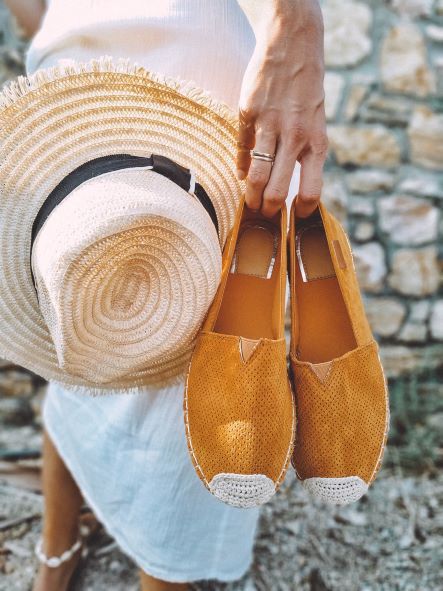Do you know what espadrilles are?
Lightweight canvas shoes called espadrilles (l'espadrille) are typically laced at the ankles and constructed using a rope braided from esparto grass. Named after the Latin word for rope, which is spartum (from the Greek sparton).

Espadrilles (l'espadrille) are light canvas shoes traditionally made with a rope braided from esparto grass and tied around the ankles with laces. The name comes from the Latin word "spartum", which comes from the Greek word "sparton", which means "rope".
It's hard to say exactly where espadrilles came from because they've been around for so long and the materials they were made from are fragile and haven't stood the test of time. The first ones like these were made during the Neolithic era. Sandals that look like espadrilles have been found all over the Mediterranean basin. They are linked to the ancient Greco-Latin culture.




